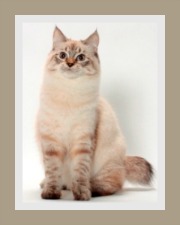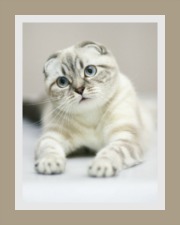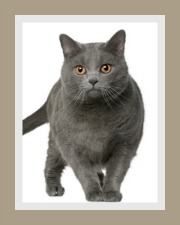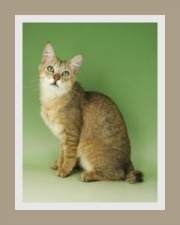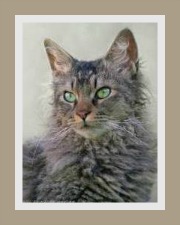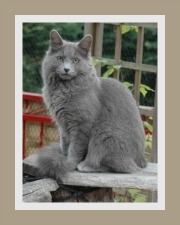Norwegian Forest Cat
Breed Profile and Facts
The Norwegian Forest Cat is believed to be the official cat of Norway.
This cat is known by many names - the SkauKatt, Norsk Skogkatt or affectionately called the Wegie.
This is a magnificent semi-longhaired cat breed, large and fairly calm by nature.
It is a cat linked to folklore and legends
so do take a peek at the chapter on the origin and history of the Norwegian Forest.
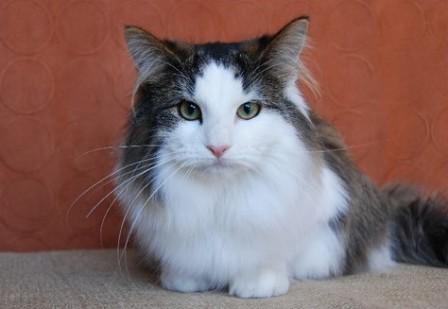
The Legends Pearl Heart | owned by Bev Smullen and bred by Petra Smith | Photo © Theresa Fouche
identifying features
This is a large robust cat, some describe it as a powerful and massive cat. It is solidly built with well developed muscles.
It has a long, shaggy and bushy tail which is carried high and the length should be equal to the body length.
The Norwegian Forest cat has muscular, heavily boned legs. The hind legs are slightly longer than the forelegs, which allows them to run and leap with great ease.
Its paws have long tufts of hair between the toes, acting as snowshoes - providing protection and insulation from the cold.
The head is described as triangular shaped. The forehead is flat and in profile the nose is straight from the brow to the tip. The chin is strong and firm.
The cat's eyes are almond-shaped, wide open and expressive and set at a slight upward angle.
Whilst all eye colors are acceptable, green and gold are generally preferred. White cats can have blue, copper or odd-eyes.
Ears are medium to large and are alert and arched forward, as though they are listening! Lynx-tipped ears are desirable. The inside of the ears are heavily furnished to protect the ears from wind, cold and moisture.
The Norwegian Forest Cat only reaches maturity at around 4 - 5 years, which means that they are slow to mature.
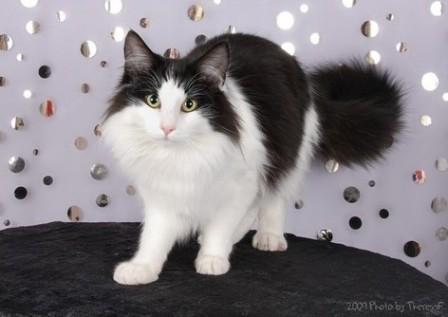
Beyond Betty Boop of Geedee | owner Athylle Caw | © Theresa Fouche
a coat to protect
Norwegian Forest cats have a medium long (semi-longhaired) double coat.
The undercoat consists of thick, dense and wooly fur, whilst the top coat consists of long, smooth, glossy guard hairs.
The coat is described as uneven as it is longer on the back and sides and shorter on the shoulders. It has a full ruff (neck, side and the frontal bib) and full britches on its hind legs.
The coat is thick, smooth and water-resistant to protect the cat from extreme winter conditions.
Its coat is thicker, fuller and denser in winter and this is when you see the true magnificence of this cat.
Most colors are accepted (some registries accept all), except for Fawn, Cinnamon, Lilac (Lavender); Chocolate and ColorPoint.
The coat
comes in numerous spotted and tabby patterns and the pattern should be
even, clear, distinct and well defined.
info for potential owners
ideal home | ideal family
The Norwegian Forest cat would probably prefer an outdoor lifestyle.
We do need to stress that outdoor does not mean roaming the streets of the neighborhood. The definition of outdoor is an enclosed and escape-proof garden.
It can adapt to indoor living provided that you create an adventure zone for your cat to prevent boredom.
The Norwegian Forest cat makes a great pet for children. Younger children need to be reminded that cats prefer gentle play. They do get on well with other pets - dogs and cats.
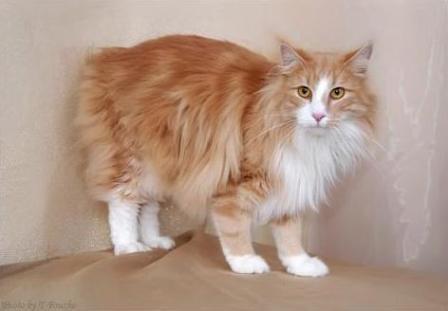
Sp Pr Mickles Simba | cream and white | owned and bred by Lesley McClure | Norwegian Forest picture © Theresa Fouche
norwegian forest personality
This is a hardy, robust and athletic cat and is known as a fearsome hunter.
Despite its size this cat is incredibly supple and a remarkably good climber. It is also one of the few cats that enjoys water.
The Wegie has an even temperament, it is a self-assured, friendly and easy-going cat.
It is a reasonably calm cat, but don't be fooled, it can be very playful too. Cat owners describe them as loving and affectionate cats.
This is an alert and intelligent cat and can be trained to walk on a leash.
norwegian forest grooming
The Norwegian Forest cat is a medium-to-high maintenance cat.
The coat needs to be brushed at least once to twice a week.
In Spring, the cat may shed heavily and requires additional brushing. If the dense undercoat is neglected, it will become matted so a daily brush is advisable.
We have compiled some great information on cat hair care and cat grooming so you may want to take a quick look.
health concerns
Generally a robust and healthy breed, but some lines do suffer from the following hereditary problems:
-
Glycogenosis which is an inherited abnormality of glucose
metabolism that can cause muscle atrophy (muscle wasting) and weakness.
- Hypertrophic cardiomyopathy (HCM) which is a heart problem.
Do consider medical cat insurance for your cat and ensure that your cat receives its annual vaccinations.
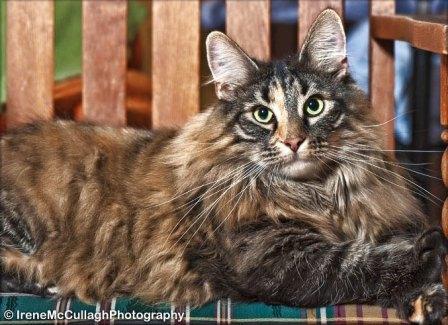
Norwegian Forest | Owned by Sunette Mulder
diet | average weight
The Norwegian is a longhaired cat and as such may suffer from hairball. If possible find a special commercial cat food that reduces hairball.
Take a tour of our great tips on choosing the right cat food and be sure to feed your companion the best food you can afford.
The average weight for Norwegian Forests is between 3.0 - 9.0 kg (6.6 - 19.8 lbs)
life expectancy
The Norwegian Forest cat has a long life expectancy of 15 years.
Related Pages:
Top of Norwegian Forest Cat Page
Return to Domestic Cats
search our site
please like us
share our site
recommend on google
rare cats
